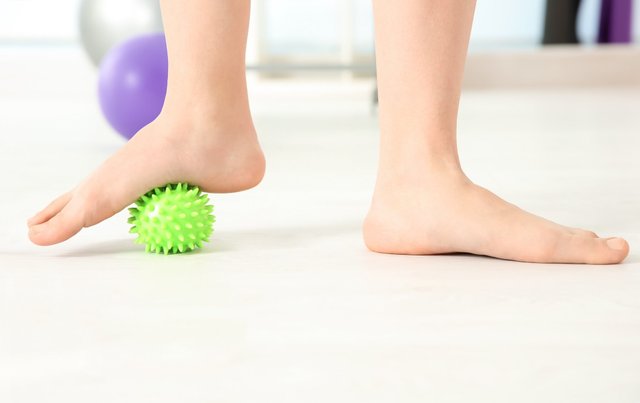
Most people with flat feet rarely experience any symptoms but sometimes this problem can be accompanied by pain in the midfoot region. This pain can occur along with swelling of the inner ankle and arch.
Flat feet can lead to hip, knee, and lower back pain. These pains usually occur over time due to the instability of posture that puts excessive stress on these joints. Oftentimes, flatfoot starts with posterior tibial tendon dysfunction. The posterior tendon maintains a foot arch and promotes strength during walking.
Things such as obesity, ankle injury, sedentary lifestyle, rheumatoid arthritis, improper shoes, steroids, diabetes, and high blood pressure can contribute to flatfoot.
The issue affects about three times more often women than men, especially after the age of 40. However, flat feet can also occur in children and this is normal since their arches haven’t yet developed. Flat feet are usually caused by genetic diseases that occur in childhood, such as
congenital flat foot, also called congenital vertical talus, dyspraxia, Ehlers-Danlos syndrome, hypermobility, and other disorders.
Flat feet may occur and disappear as a kid grows. However, in some children, flat feet will not go away by itself. Scientists still don’t know the exact cause of it. Obesity increases the risk as it puts additional stress on a developing foot.
Flat feet in children might become obvious in adolescence when all abnormalities become more obvious. If left ignored, the problem can progress and worsen. While flat feet can be self-diagnosed, it’s important to find the underlying cause of the problem. You need to visit a foot doctor, so they will find the root cause through a visual examination and imaging tests that evaluate the structure of the foot.
1. Arthritis
Rheumatoid arthritis in the foot or ankle can provoke flatfeet. According to statistics, arthritis is the root cause of flatfoot in almost half of the population suffering from this problem. Rheumatoid arthritis triggers pain and inflammation in the lining of joints, bone erosion, and joint damage.
2. Hammertoe
Flat feet can also lead to a hammertoe. A hammertoe is a toe that has a poor bend in its middle joint, which makes the toe bend downward look like a hammer. Keep in mind that hammertoe without proper treatment can get worse and lead to severe pain.
3. Shin Splint
Another consequence of flat feet is shin splints. Flat feet make foot's arch collapse, which leads to inflammation and pain. It usually occurs because of improper shoes. Shin splints are accompanied by symptoms such as pain in the lower leg when bending the foot and pain to the shin.
4. Pain
Flat feet are often linked to pain on the inside of the ankle, in the lower leg, or on the foot. This pain normally increases during walking, standing, and running and reduces during rest. The pain caused by flat feet can be severe and thus can interfere with lots of daily activities.
5. Tendonitis
If left untreated, flat feet can result in tendonitis. Tendonitis caused by flatfoot usually affects the Achilles tendon due to the excessive stress placed on the back of the heel and ankle. If you have tendonitis you might experience symptoms like swelling, pain, and warmth along the tendon.
6. Bunions
A bunion is a disorder that affects the joint at the base of the big toe. Wearing improper shoes and ignoring flat feet, may put extra pressure on the joint making the joint become larger.
7. Calluses
Finally, flat feet might lead to the formation of calluses on the feet. Calluses can become larger and painful. If you have swelling and pain, it’s wise to visit a foot specialist in order to avoid severe infection.